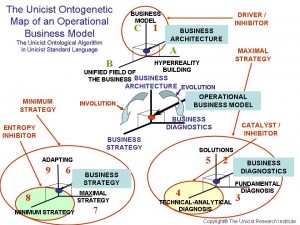Business architecture can only exist if it is the final operational solution of a business modeling process. Business modeling processes, at an operational level, need to integrate the diagnosis, strategy and architecture of a business.
 Designing a business model requires being aware of the business itself, its restricted context (the market) and the wide context (the environment).
Designing a business model requires being aware of the business itself, its restricted context (the market) and the wide context (the environment).
We invite you to enter the world of business architecture in order to be able to transform the idea of the concept of a business into business processes. This implies the integration of diagnoses, strategies and architecture.
That is why the building of the business architecture demands a huge effort in order to have a reliable strategy based on an accurate diagnosis to build effective business processes that only require operational skills to be managed.
The ontogenetic map of the process implies starting with a hypothetical business architecture and ending with an operational business model.
The steps to be followed to define an operational business model are:
1. Define the idea of the business.
A) Emulate the business architecture in a model.
B) Define the unified field of the business.
C) Define the business model to be achieved.
Develop a “Japanese park” with the participants to confirm the model.
2. Define the hypothetical solutions that will be considered.
3. Define the fundamental diagnosis.
4. Define the technical analytical diagnosis.
5. Confirm the solutions that will be implemented.
Develop the Pilot Test I to confirm the diagnosis.
6. Define the hypothetical growth that can be achieved.
7. Define the maximal strategy to be developed in the business.
8. Define the minimum strategy that can ensure the growth to be achieved.
9. Confirm the growth to be achieved.
Develop the Pilot Test II to confirm the strategy to be used.
10. Make the final pilot test of the business model.
Consider that this integration provides the hypothesis for the detailed business architecture to define the business processes to manage the operation.
NOTE: The Unicist Research Institute was the pioneer in complexity science research and became the major research organization in the world in the field of human adaptive systems. More than 4,000 unicist ontological researches were developed since 1976 until July 2011 in the field of individual, institutional and social evolution. They included the development of the unicist ontogenetic maps (DNA) of institutions.
